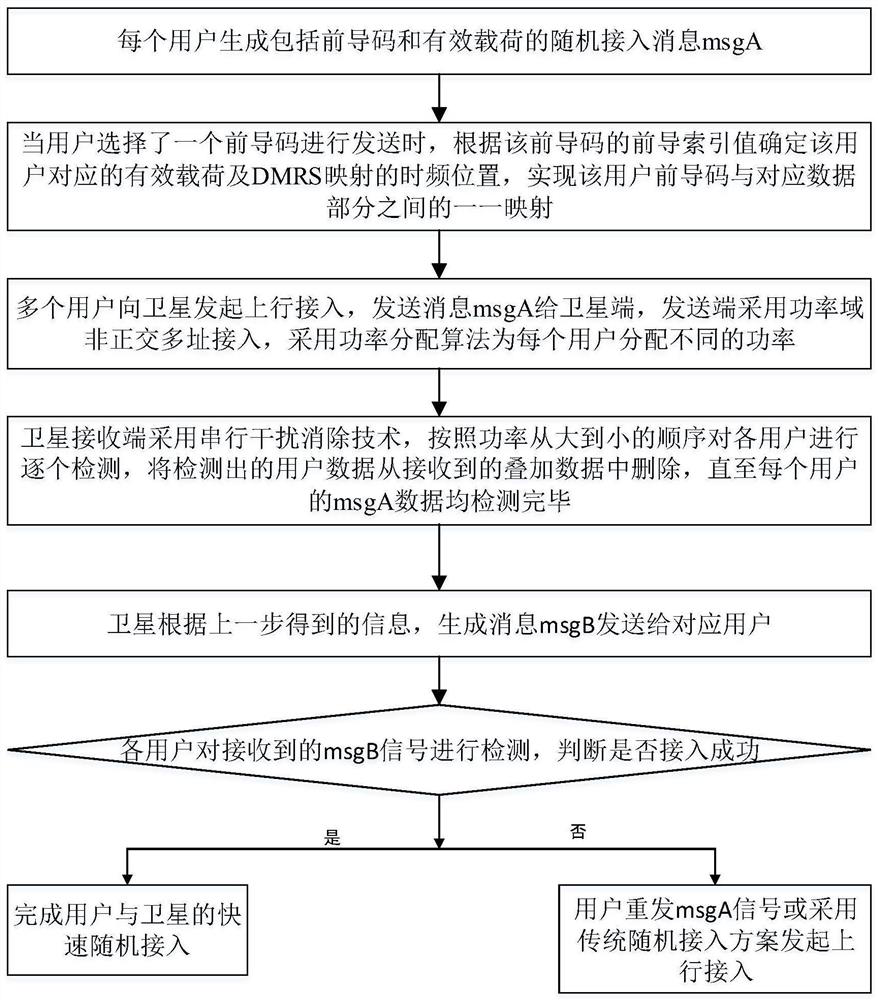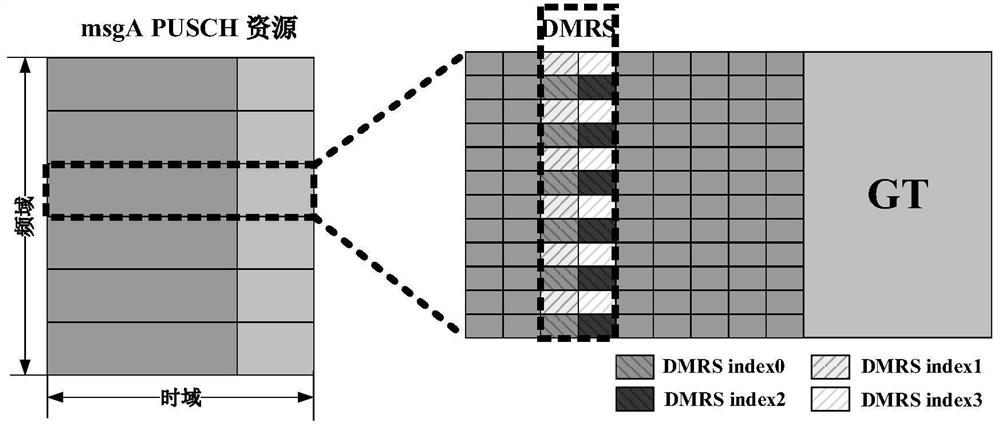A two-step random access channel design and signal detection method in a satellite scenario
A random access channel and signal detection technology, which is applied in wireless communication, electrical components, radio transmission systems, etc., can solve the problems of data signal collision and the inability to apply single-antenna port satellites, etc., and achieve the effect of high transmission efficiency
- Summary
- Abstract
- Description
- Claims
- Application Information
AI Technical Summary
Problems solved by technology
Method used
Image
Examples
Embodiment Construction
[0045] In order to facilitate those of ordinary skill in the art to understand and implement the present invention, the present invention will be further described in detail and in-depth below in conjunction with the accompanying drawings.
[0046] The present invention provides a two-step random access channel design and signal detection method in a satellite scenario. The process is as follows: first, according to the configuration information of fast random access, when the user side generates an msgA signal and establishes an uplink connection, it sends it to the satellite side, Then, the satellite side detects the msgA signal, generates msgB and transmits it to the user according to the results of preamble detection and payload decoding. Finally, the user side detects the msgB signal to determine whether the access is successful. When the access is successful, the fast random access process is completed; otherwise, the user needs to resend the msgA signal or initiate upli...
PUM
 Login to View More
Login to View More Abstract
Description
Claims
Application Information
 Login to View More
Login to View More - Generate Ideas
- Intellectual Property
- Life Sciences
- Materials
- Tech Scout
- Unparalleled Data Quality
- Higher Quality Content
- 60% Fewer Hallucinations
Browse by: Latest US Patents, China's latest patents, Technical Efficacy Thesaurus, Application Domain, Technology Topic, Popular Technical Reports.
© 2025 PatSnap. All rights reserved.Legal|Privacy policy|Modern Slavery Act Transparency Statement|Sitemap|About US| Contact US: help@patsnap.com



